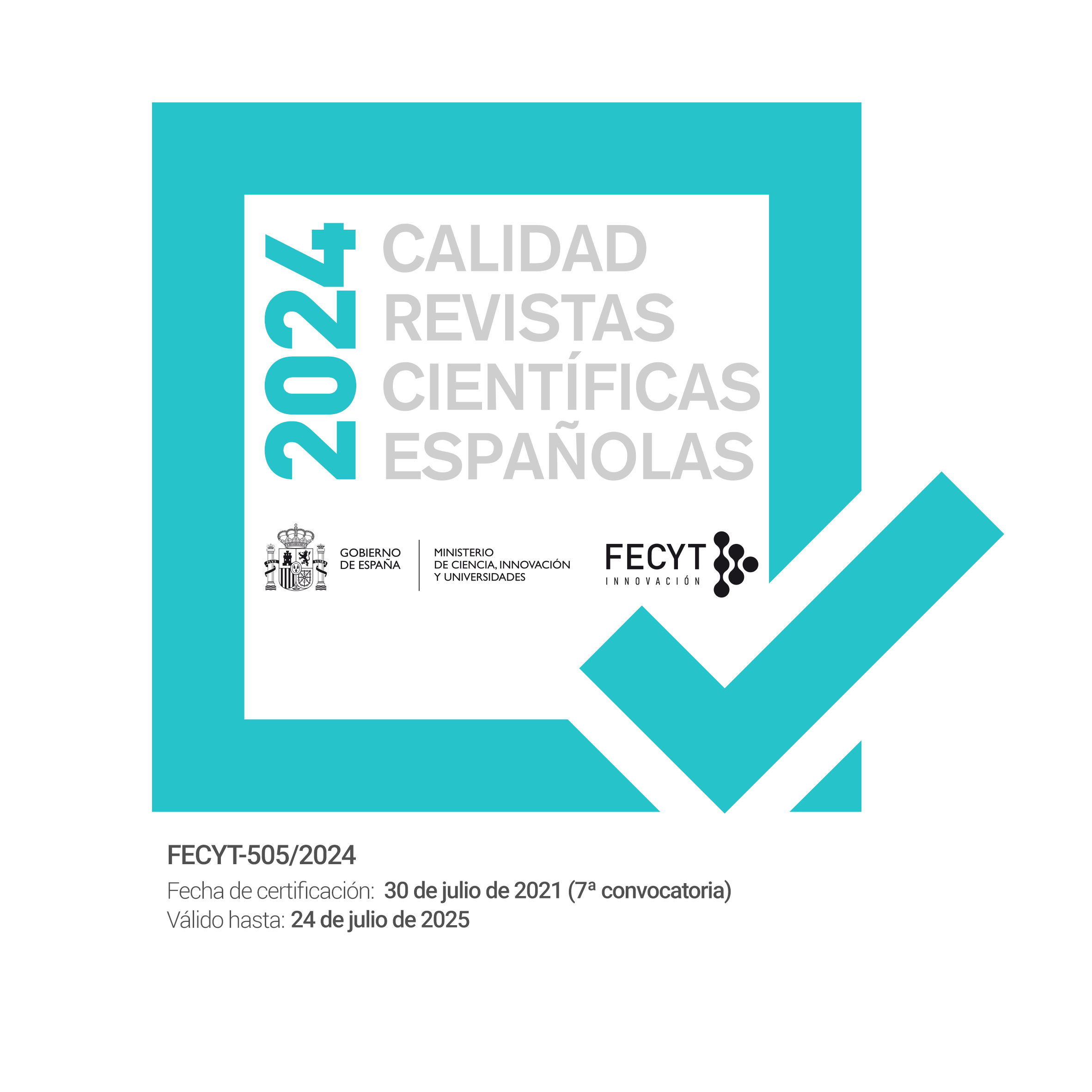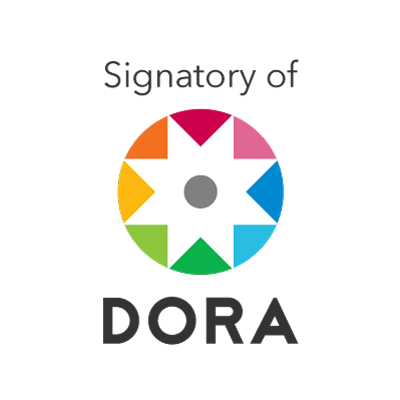Prosperity and Paranoia. Engineering Atomic Fear with Cold War Images
DOI:
https://doi.org/10.7203/qfia.9.1.21849 Resum
Resum
Prosperidad y paranoia. Diseñando miedo atómico con imágenes de la Guerra Fría
Abstract: This paper reflects on the way in which certain moving images were used to engineer atomic fear into a manageable emotion in the U.S. during the early Cold War Era. A time of political, technological, economic, and social transformations, which were met with an extensive public relations campaign that relied heavily on the creation and dissemination of tightly controlled images of nuclear tests and models of civic virtue. It focuses on a selection of ephemeral productions to offer a view of the different ideologies at work in early Cold War American propaganda and its dialectic of prosperity and paranoia.
Resumen: Este texto reflexiona sobre cómo ciertas imágenes en movimiento se usaron para transformar el pánico provocado por la bomba atómica en una emoción manejable en Estados Unidos durante los primeros años de la Guerra Fría. Una época de cambios políticos, tecnológicos, económicos y sociales en la que tuvo lugar una intensa campaña de relaciones pública basada, en gran medida, en la creación, distribución y control riguroso de imágenes de pruebas nucleares y modelos de virtud ciudadana. El artículo analiza una pequeña selección de producciones audiovisuales efímeras, en las que se pueden observar distintas ideologías implicadas en la propaganda de los primeros años de la Guerra Fría, así como la dialéctica de prosperidad y paranoia que permeaba estos discursos visuales.
Keywords: atomic fear, propaganda, Cold War, television, prosperity, paranoia.
Palabras clave: miedo atómico, propaganda, Guerra Fría, televisión, prosperidad, paranoia.
 Descàrregues
Descàrregues
 Referències
Referències
Atkinson, N. S. 2011, “Newsreels as Domestic Propaganda: Visual Rhetoric at the Dawn of the Cold War”, Rhetoric and Public Affairs, 14, no. 1: 69-100.
Badiou, A. 2005, El Siglo, Buenos Aires, Manantial.
Barfield, R. 2007, A Word from Our Viewers: Reflections from Early Television Audiences, Westport, Connecticut, and London, PRAEGER.
Baudrillard, J. 1993, “The Timisoara Syndrome: The Télécratie and the Revolution”, D: Colombia Documents of Architecture and Theory, 2: 61-71.
Bazin, A. 1960, “The Ontology of the Photographic Image”, Film Quarterly, 13, no. 4: 4-9.
Belton, J. 2012, American Cinema / American Culture, New York, McGraw Hill.
Boyer, P. 1985, By the Bomb’s Early Light. American Thought and Culture at the Dawn of the Atomic Age, New York, Pantheon Books.
Boyer, P. 2016, “Sixty years and counting: nuclear themes in American culture, 1945 to the present”, In Understanding the imaginary war. Culture, thought and nuclear conflict, 1945-90, edited by Matthew Grant and Benjamin Ziemann, Manchester, Manchester University Press, 75-91.
Boyle, D. 1982, “The Atomic Cafe”, Cineaste, 12 (2): 39-41.
Derrida, J. and Stiegler, B. 2002, Echographies of Television, Cambridge and Malden, Polity Press.
Doane, M. A. 2002, “The Representability of Time.” In The Emergence of Cinematic Time. Modernity, Contingency, the Archive, Cambridge, Massachusetts and London, Harvard University Press, 1-32.
Doherty, T. 2018, Show Trial. Hollywood, HUAC, and the Birth of the Blacklist, New York, Columbia University Press.
Evans, J. 1998, Celluloid Mushroom Clouds. Hollywood and the Atomic Bomb, Boulder, Westview Press.
Evans, T. W. 2006, The Education of Ronald Reagan: The General Electric Years and the Untold Story of His Conversion to Conservatism, New York, Columbia University Press.
Freedland, M. and Paskin, B. 2009, Witch-Hunt in Hollywood. McCarthyism’s War on Tinseltown, London, JR Books.
Garrison, D. 2006, Bracing for Armageddon. Why Civil Defense Never Worked, New York, Oxford University Press.
Grant, M. and Ziemann, B. 2016, Understanding the Imaginary Cold War. Culture, thought and nuclear conflict, 1945-90, Manchester, Manchester University Press.
Hales, P. B. 1991, “The Atomic Sublime”, American Studies, vol. 32, no. 1 (Spring): 5-31.190
Hamilton, K. and O’Gorman, N. 2019, Lookout America! The Secret Hollywood Studio at the Heart of the Cold War, Hanover, Dartmouth College Press.
Hariman, R. and Lucaites, J. L. 2012, “The Iconic Image of the Mushroom Cloud and the Cold War Optic”, Picturing Atrocity, edited by Geoffrey Batchen, Nancy K. Miller and Jay Prosser, London, Reaction Books, 135-45.
Jacobs, B. 2010, “Atomic Kids: Duck and Cover and Atomic Alert Teach American Children How to Survive Atomic Attack,” Film & History 40, no. 1 (Spring): 25-44.
LaFollette, M. C. 2008, Science on the Air. Popularizers and Personalities on Radio and Early Television, Chicago and London, University of Chicago Press.
Lifton, R. J. and Mitchell, G. 1996, Hiroshima in America, New York, Avon Books.
Mander, J. 1978, Four Arguments for the Elimination of Television, New York, Quill.
Masco, J. 2004, “Nuclear Technoaesthetics: Sensory Politics from Trinity to the Virtual Bomb in Los Alamos,” American Ethnologist, August, vol. 31: 349-73.
Masco, J. 2008, “Survival is Your Business: Engineering Ruins and Affect in Nuclear America,” Cultural Anthropology, May, 23, 2: 361-98
Masco, J. 2021, The Future of Fallout, and Other Episodes in Radioactive World-Making, Durham and London, Duke University Press.
Mielke, B. 2005, “Rhetoric and Ideology in the Nuclear Test Documentary,” Film Quarterly, 58, no. 3 (Spring): 28-37.
Morse, M. 1990, “An Ontology of Everyday Distraction. The Freeway, the Mall, and Television.” In Logics of Television. Essays in Cultural Criticism, edited by Patricia Mellencamp, Bloomington and Indianapolis: Indiana University Press, 193-221.
Naremore, J. 2008, More Than Night. Film Noir and its Contexts, Updated and Expanded Edition, Berkeley, Los Angeles, London, University of California Press.
Osteen, M. 1994, “The Big Secret: Film Noir and Nuclear Fear,” Journal of Popular Film and Television, 22, 2: 79-90.
Polan, D. 1986, Power & Paranoia. History, Narrative, and the American Cinema, 1940-1950, New York and London, Columbia University Press.
Powaski, R. E. 2000, Return to Armageddon. The United States and the Nuclear Arms Race, Oxford and New York, Oxford University Press.
Raphael, T. 2009, “The Body Electric. GE, TV, and the Reagan Brand”, TDR: The Drama Review, 53:2, (Summer 2009).
Reisman, D. 1981, “The Dream of Abundance Reconsidered”, The Public Opinion Quarterly, vol. 45, no. 3 (Autumn, 1981): 285-302.
Rosen, R. 2012, The World Split Open: How the Modern Women’s Movement Changed America, Tantor eBooks.
Russell, C. 2009, Experimental Ethnography. The Work of Film in the Age of Video, Durham and London, Duke University Press.
Schiller, H. 1991, Culture Inc. The Corporate Takeover of Public Expression, New York and Oxford, Oxford University Press.
Shabtay, T. 2015, “The Art and the Politics of The Forgotten Space”, Oxford Art Journal, 38, 2: 263-82.
Shaw, T. 2007, Hollywood’s Cold War, Edinburgh, Edinburgh University Press.
Spigel, L. 1990, “Television in the Family Circle. The Popular Reception of a New Medium,” in Logics of Television. Essays in Cultural Criticism, ed. Patricia Mellencamp, Bloomington and Indianapolis, Indiana University Press.
Titus, A. C. 2004, “The Mushroom Cloud as Kitsch.” In Atomic Culture: How We Learned to Stop Worrying and Love the Bomb, edited by Scott C. Zeman and Michael A. Amundsen, 101-23.
Vanderbilt, T. 2010, Survival City (Adventures Among the Ruins of Atomic America), Chicago and London, The University of Chicago Press.
Weart, S. R. 1988, Nuclear Fear. A History of Images, Cambridge, Massachusetts and London, Harvard University Press.
Wiener, N. 1989, The Human Use of Human Beings. Cybernetics and Society, London, Free Association Books.
Descàrregues
Publicades
Com citar
-
Resum550
-
PDF 468
Número
Secció
Llicència
![]()
Les obres publicades en Quaderns de Filosofia es troben sota la licencia de Creative Commons Reconocimiento-NoComercial-SinObraDerivada 4.0 Internacional.
Los autores que publican en esta revista están de acuerdo con los siguientes términos:
- Los autores conservan los derechos de autor y garantizan a la revista el derecho de ser la primera publicación del trabajo al igual que licenciado bajo una Creative Commons Attribution License que permite a otros compartir el trabajo con un reconocimiento de la autoría del trabajo y la publicación inicial en esta revista.
- Los autores pueden establecer por separado acuerdos adicionales para la distribución no exclusiva de la versión de la obra publicada en la revista (por ejemplo, situarlo en un repositorio institucional o publicarlo en un libro), con un reconocimiento de su publicación inicial en esta revista.
- Se permite y se anima a los autores a difundir sus trabajos electrónicamente (por ejemplo, en repositorios institucionales o en su propio sitio web) antes y durante el proceso de envío, ya que puede dar lugar a intercambios productivos, así como a una citación más temprana y mayor de los trabajos publicados (Véase The Effect of Open Access) (en inglés).





